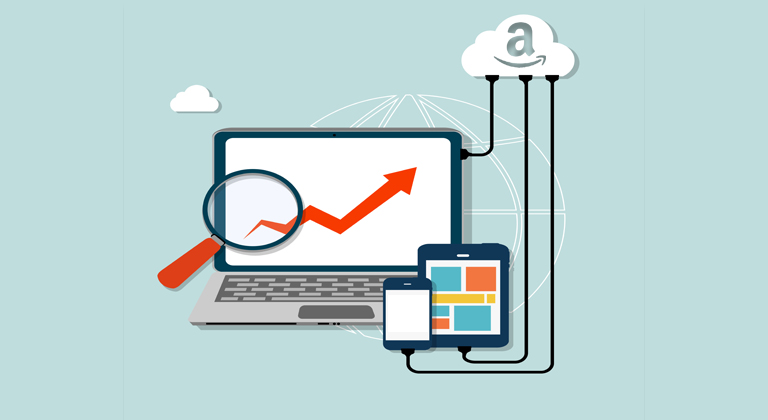Amazon Attribution Provides Long-term KU Page Read Data
Tracking individual sales that come from each advertising channel is incredibly useful, but if your book is enrolled in Kindle Unlimited, there is more to it than that. You might still be earning money without actual sales, when someone “borrows” your book and starts to read. In a way, KU borrows actually change how we have to look at how much our books earn from ads, because those page reads aren’t tied as closely to our ad run as more traditional sales.
As Ginger reminds us, KU page reads mean your ROI doesn’t just stop at the end of your campaign. Using one of his own books as an example, Ginger takes us through the numbers to demonstrate how page reads can continue to pay dividends long after your ad run is over, and how attribution tags finally allow us to specifically track this metric.
As you’ve probably noticed from all the blog posts I’ve written on the subject, I’m super-excited about the introduction of Amazon Attribution Tags. These finally allow you to track user behavior from all those clicks you’ve driven to your book page from Facebook or Instagram ads. Or, in simpler terms, whether your advertising is driving any book sales or not.
If you’ve not read any of those, however, let me fill you in: A few weeks ago, Amazon introduced something called Attribution Tags, which you could set up in your advertising dashboard on Advertising on Amazon and then use to track what people do when they’ve arrived on Amazon. It finally connected the missing dots between the most effective advertising platforms and the data you needed to optimize it properly. Up until now, figuring out whether your Facebook advertising worked or not was highly calculated guesswork.
But that’s no longer true with Attribution Tags. Now you can see exactly how many of the clicks you paid for on Facebook (or wherever you advertise) translate into paid book sales or Kindle Unlimited page reads.
With book sales, this is definitely helpful – it helps differentiate between a surge in book sales generated by advertising, or just a lucky day in which a disproportionate number of readers stumbled across your book. Where the value really comes in, however, is in tracking Kindle Unlimited page reads. It’s fair to claim that tracking book sales from Facebook was largely guesswork before Amazon Attribution Tags came along but when it came to tracking Kindle Unlimited page reads, it might as well have been witchcraft.
That’s because you never know how many daily page reads are connected to any one particular reader. If you get 400 KU page reads in a day, it might mean that forty readers read the first ten pages of your book, or that one eager reader devoured all 400 pages of it in a single sitting.
With page reads you have to consider that every page read represents the behavior of a real, live human flicking through your book – and that every extra page they read keeps paying you long into the future. A slow reader might only get through 10 pages of your book a day – but once they’ve finished, the $2 (or whatever) you earned spends just the same as the $2 in royalties you earned from somebody who reads a single book in a single day.
Page reads are almost like little fishhooks, rather than harpoons. You’re not landing a “big one,” which is how you could describe a full-price book sale on Amazon. Instead, you’re reeling in dozens of smaller fish, which grow bigger and bigger the closer you draw them in.
But that’s very difficult to quantify when it comes to your advertising budget. Even if you’re only making a few bucks a day in book sales, it’s almost impossible to differentiate 10 extra page reads generated from advertising against 10 page reads generated because one of the people reading your book had an extra fifteen minutes to kill that day.
But now you can – right down to the individual page. Thanks to Attribution Tags you can now track every single page read generated as a result of your advertising – and it paints a pretty unexpected picture!
Let’s Look at a Real Example
I recently spent $100 advertising my MC Romance series on Facebook, and for the first time I used Attribution Tags to track the performance of those ads. What was interesting is how they revealed my advertising had actually been far more effective than I’d thought it had thanks to Kindle Unlimited.
I spent my $100 on five days of advertising – so a budget of $20 a day. After the five days was up, I tracked the metrics using the Affiliate Tags dashboard and was disappointed to discover that I’d earned only $18.98 in Kindle Page Reads and made one paid book sale (which would have been more, I’m convinced, if Amazon hadn’t stopped selling eBooks on their mobile app.)
Here’s what that looked like:

That meant my advertising costs of $100 had been met with a return of only $22.47 – so based on this data, I was in the red for $77.53.
Except one weird thing I noticed, however, was that my Attribution Tags kept tracking page reads long after I’d finished my advertising campaign. I’d hoped my $20 a day in advertising would generate an immediate return of $20 or more. Instead, however, I saw that return trickling in at a rate of a few dollars a day – but long after I’d stopped spending money.
Ten days later, I checked back in and saw that the return on my advertising had more than doubled – now reflecting $45.83 in page reads (and just that one paid book sale, with $3.49 in royalties.) Therefore, I was now only in the red for $50.68 – and even that figure continued to shrink daily.

You’d never think a man would be so happy to lose money!
But I was happy because it reflected that my advertising did work – eventually. If the page reads continue trickling in at this rate, I’ll have made my initial spend back just nine days later, and everything I earned after that would be profit.
That’s the kind of information that could help change the trajectory of an author’s career. Whereas I might have given up on advertising before, I can now see that a large initial spend can return your investment in the long term – and if you continue advertising, the cumulative effect snowballs into something much, much larger.
In my case, I’m fascinated to discover that the page reads I’m receiving daily aren’t just from the first book in the series that I advertised. They’re coming in from subsequent books in the series – as readers discover one and then move onto the next. Without Attribution Tags I’d never have been able to track that information, but now I can see that each new reader I pull in won’t just land me $2 in page read royalties. If they continue through all twelve of my books, it could be many multiples of that.
I’ll keep you posted as I glean more advertising data, but I’m pretty excited about the whole thing. I continue to believe that Amazon Attribution Tags might be the game-changer many self-published authors have been desperately searching for.












1 Comments